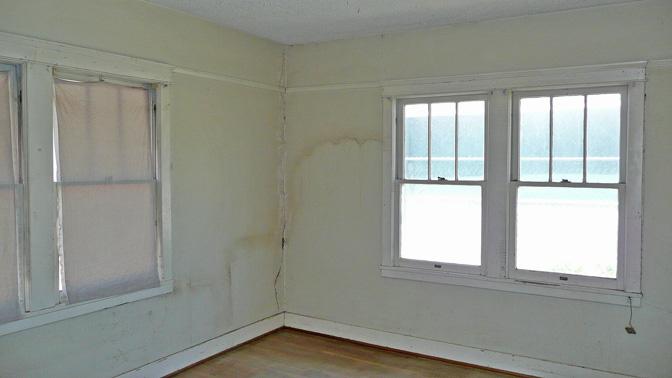How Much Does It Cost To Block/Paint Water Staining?

Cost to Stain Block
| job | Description (these prices include all materials) | labour |
| 1 | The en suite shower leaked for a day or two last week and your kitchen ceiling now has a brown patch. The leak is sorted and the ceiling isn’t papered. This will need only 2 visits to bleach it, then one with the undercoat and one to apply 2 coats of emulsion. If it’s a kitchen ceiling you may want an eggshell paint finish. Call it a total of 1 day for 1 man, plus all that travel back and forth, plus materials | £200 |
| 2 | Same job in the living room. The ceiling’s lining papered and consequently it all has to come off. That means a complete room furniture strip: carpet out; paper off; treat the ceiling; re paper; two coats of emulsion; carpet and furniture back. We are assuming everything goes temporarily into your empty garage, but do you have an empty garage? This will take 2 men 3 days, plus materials | £875 |
| 3 | Same as job 2 but the damp is on the wall around the window and not on the ceiling. Move the furniture into the middle, cover the carpet, do the job, put it all back. 2 men 2 days | £600 |
| 4 | What if you couldn’t just strip one wall and all 4 walls need papering to keep it all matching? That’s 2 men for 4 days plus materials | £1300 |
“Labour” at £175 a day (tradesman) £100 (labourer), includes incidental fixings etc. and tipping. “Materials” if mentioned, are larger things (a boiler) and stuff only you can choose (tiles etc). Also VAT must be added all round.
Mould Removal
First, tackle the source of the problem
That brown mark we call water staining is a bit of a misnomer. Actually it’s mould, which is festering quietly away minding its own business. True, there had to be water present for a while in order for it to take hold, but just because you think the water has now gone, don’t think the mould will be scuttling out after it any time soon!
So, the first job is to stop the water by getting the leak sorted out. If the water stains aren’t obviously caused by a leak, then find the cause and take measures to stop the rising damp, or cure the condensation. Then tackle the mould.
Assuming it is just a leak and it’s only a couple of weeks old, you may be able to get away with just stripping off any wallpaper prior to having the ceiling treated. If it’s a month old you should consider removing the plaster as well.
And by the way, we have an article about re plastering.
Now I digress ….
A long time ago when I was the colour of grass, I was called to treat a lot of mould. Apparently, a leaking water tank had been pouring water down the internal walls while they were on holiday. When I got there a few weeks later, the leak had been fixed but the mould looked like those cheap special effects in an old Doctor Who episode. If you stood there quietly, it pulsated and made a scary humming noise!
All I did was remove the paper, treat the mould properly, then redecorate. Three months later it all came creeping slowly back through the new paper. Luckily I had my transporter with me, so Scotty was able to beam me up out of harm’s way.
We should have hacked all the relevant plaster off as well!
Back to the plot…
Treating the mould is easy, first use bleach, lots of it, slapped on daily for about a week. When the mould is dead you have a choice. You can apply a coat of oil based undercoat or an oil based paint called “primer sealer”. When that’s dry, you can hang your wallpaper or apply your emulsion. Only do this if you are absolutely certain that the mould is beyond resurrecting itself. Otherwise you will watch your room slowly turning into Fingal’s Cave.
As you can see, the work involved in curing mould can be little, or large and consequently, so can the cost! You could have a go yourself and get it wrong, or just go straight to the expert and hope he gets it right first time.
FAQs 'traffic light' guide
-
What's easy about this job…
Open or CloseOpening a window regularly and letting some air in to the affected room.
-
What's tricky about this job…
Open or CloseIdentifying the problem - especially if it's a roof leak.
-
Potential problems with regards to this job…
Open or CloseMultiple roofer visits. He won't guarantee a patch repair and so he may beed to take several trips to find the ingress point. Scaffolding? Re-roof on a flat roof especially.
www.buildingsheriff.com
Copyright The Building Sheriff Ltd 2017